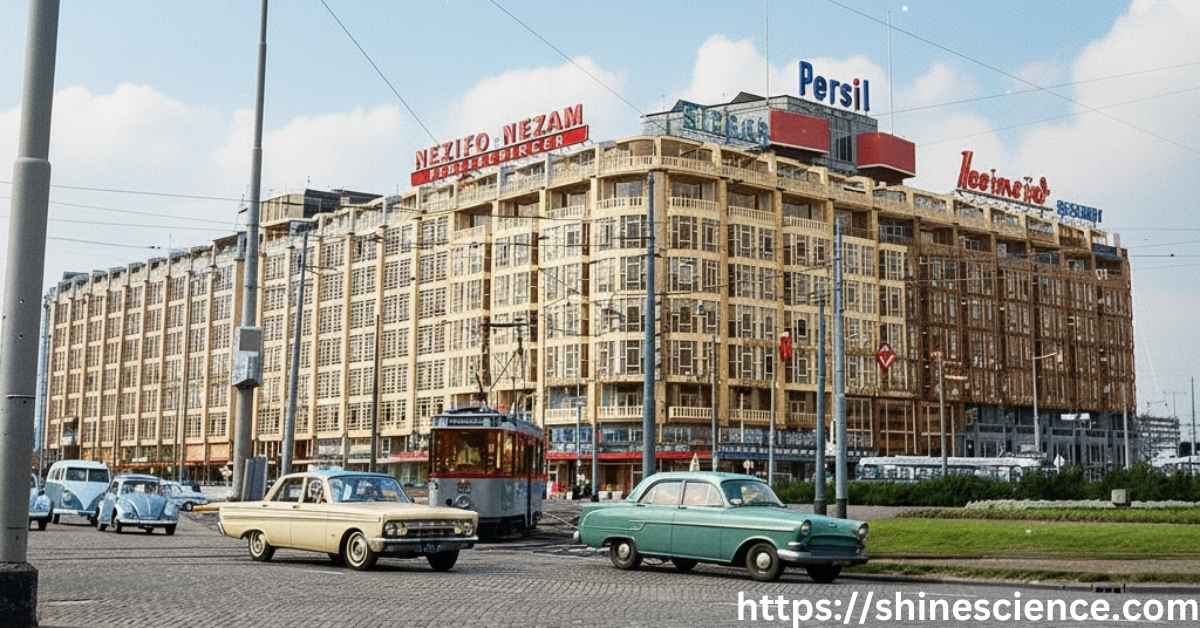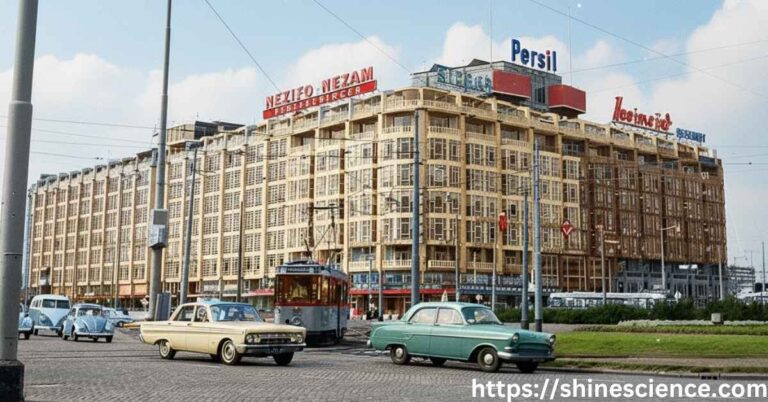
Introduction
In the bustling period after World War II, the Dutch construction sector faced tremendous pressure to rebuild quickly, efficiently and sustainably. It was in this context that Stichting Bouwresearch (SBR) emerged in 1959, dedicated to coordinating research into building methods, materials and installations. The institute laid down a foundation of expertise and practical guidelines that would influence the Netherlands’ built-environment for decades to come.
Over time, SBR continued evolving — merging in 2013 with CUR (Civieltechnisch Centrum Uitvoering, Research en Regelgeving) into SBRCURnet, and transferring many of its activities by 2018. This transformation reflects the dynamic knowledge-landscape of building and infrastructure in the Netherlands, and the enduring legacy of SBR’s work in standards, guidelines and industry collaboration.
1. Foundation and Early Years of Stichting Bouwresearch
A post-war knowledge mission
Stichting Bouwresearch (SBR) founded in 1959 with the explicit aim of stimulating and coordinating research into new construction methods in the Netherlands. (Wikipedia) The focus on creating a structured knowledge infrastructure in an industry undergoing rapid change: new materials, techniques, and large-scale building efforts. During its early years, SBR headquartered in Rotterdam (in the Groothandelsgebouw).
Development of standards and guidelines
From its inception, the institute published books, worked on cost-monitoring, materials behaviour, and – importantly – issued norms such as vibration (trillings) guidelines for building installations. For example, SBR’s series of “trillingsrichtlijnen” (vibration guidelines) have been used to assess building damage, nuisance to people and damage to sensitive equipment. These guidelines illustrate how SBR moved from pure research into practical instruments that practitioners, consultants and contractors rely on.
2. The Role of SBR in the Building & Utility Sector
Focus on building and installations
One of the key sectors for SBR was the B&U-sector (Building & Utility – “burger- en utiliteitsbouw”). Together with its publications and guideline sets, SBR played a role in helping contractors and designers address issues such as cost control, building performance and sustainability.
Knowledge transfer and industry connectivity
Beyond publishing, SBR functioned as a knowledge platform – collecting, translating and disseminating existing and new knowledge. The aim was to raise productivity and quality in the construction industry. This “bridging” role between research and practice is one reason why SBR remains a recognised name in Dutch building-knowledge even after its organisational change.
3. Merger into SBRCURnet and Later Developments
The merger with CUR
In January 2013, SBR announced its merger with CUR. The new organisation, SBRCURnet, combined SBR’s focus on building and installations with CUR’s expertise in civil engineering, infrastructure and spatial planning. The intention was to create a stronger entity capable of addressing broader and more complex challenges in the built environment.
Transition and closure
Despite the strong legacy and network, SBRCURnet ceased to exist as a standalone organisation on 31 December 2017. After the closure, publication and knowledge portfolios were taken over by other parties: for infrastructure (grond-, weg- en waterbouw) by CROW, and for the built environment and installations by ISSO. This highlights how knowledge institutions may evolve or transfer their roles in response to funding, sector changes and consolidation.
4. Key Contributions and Impact
Vibration guidelines and practical influence
One of SBR’s key contributions is the “SBR-trillingsrichtlijn A” (and B and C) which provides a methodology to assess and manage vibration effects in construction. These guidelines help quantify risk of damage to buildings, nuisance to occupants, and effects on sensitive equipment. For contractors and consultants, adherence to these guidelines is now standard practice in many Dutch projects.
Knowledge sharing and standard-setting
Through its role as a knowledge platform, SBR influenced many parts of the construction sector – from material choice and installation performance to productivity and cost monitoring. Its publications, guidelines and collaborations helped set the tone for higher standards and better practices. The fact that it merged and transitioned its portfolio suggests that its work was deeply embedded in the sector.
Legacy in education, research and collaboration
While SBR as an institution no longer exists in its original form, the legacy lives on in:
- guidelines still referenced today
- networks and committees formed under SBR’S umbrella
- the culture of bridging research and practice in the Dutch building industry
The name “Stichting Bouwresearch” continues to hold significance when discussing construction research in the Netherlands.
5. Why Stiftung Bouwresearch Matters Today
Research to practice — closing the gap
In construction, a common challenge is taking cutting-edge research and making it actionable on the building site. SBR addressed that by creating tools and guidelines (e.g., vibration standards) that designers, engineers and contractors could apply. This kind of “research to practice” model remains relevant as the construction industry faces new challenges – sustainability, circular economy, digitalisation.
Knowledge infrastructure and future readiness
The fact that SBR (and then SBRCURnet) served as a hub of knowledge reinforces the importance of having organizations dedicated to building and maintaining construction knowledge. For students, professionals or organisations seeking to engage with building-innovation, research institutions like SBR highlight the value of a reliable knowledge base.
Influence on regulation and professional practice
Because many of SBR’s guidelines have been referenced in regulation (for example via the Dutch Building Decree or construction law) the institute’s work affects real-world decisions. For example, its vibration guidelines are mentioned in relation to legal obligations in building works. As the building sector increasingly emphasises performance, sustainability and occupant comfort, this kind of influence becomes even more significant.
6. Lessons for Industry Professionals
Embrace structured knowledge
For construction professionals, the example of SBR suggests the benefit of structured, documented guidelines rather than ad-hoc practice. Whether you are an architect, consultant or contractor, engaging with trusted guidelines (like those originally from SBR) supports better quality and fewer risks.
Maintain connection to research
The world of building technology is evolving fast (e.g., smart buildings, IoT, sustainability). The SBR legacy shows the value in staying connected to research institutions or knowledge platforms, so you can anticipate change rather than simply respond to it.
Knowledge sharing and collaboration matter
One of the strengths of SBR was acting as a platform for different stakeholders (researchers, engineers, contractors). If you work in a project context, seeking collaborative approaches, co-creation of knowledge and sharing experiences helps raise overall sector capability.
Conclusion
From its founding in 1959, Stichting Bouwresearch carved out a vital role in the Dutch building sector by bridging research and practice, developing guidelines that guided contractors, engineers and regulators, and creating a knowledge network that lasted decades. Its merger into SBRCURnet in 2013 and eventual dissolution as a standalone body in 2017 did not diminish its impact — rather, it handed off a legacy of structured, applied knowledge to institutions that continue to serve the built environment today.
For professionals, students or companies engaged in construction, infrastructure or building installations, the story of SBR is more than historical. It underscores the value of investing in knowledge, aligning research with practice, and collaborating across sectors. In a time when sustainability, digitalisation and occupant-wellbeing dominate the agenda, the principle of combining research, application and dissemination remains as relevant as ever.
Frequently Asked Questions (FAQs)
Q1. What does Stichting Bouwresearch stand for?
A: Stichting Bouwresearch (SBR) was a Dutch knowledge institute focused on building and building installations. It was founded in 1959 and later became part of SBRCURnet.
Q2. What are SBR “trillingsrichtlijnen”?
A: These are vibration guidelines issued by SBR (and later SBRCURnet) that define measurement and assessment methods for vibrations from construction works, covering damage to buildings (A), nuisance to people (B) and sensitive equipment (C).
Q3. How did SBR become SBRCURnet?
A: In 2013, SBR merged with CUR to form SBRCURnet, combining their expertise in building and infrastructure knowledge.
Q4. Does Stichting Bouwresearch still exist?
A: Not in its original form. SBRCURnet’s activities ceased as a standalone organisation by end of 2017, with knowledge portfolios transferred to other bodies. (Wikipedia)
Q5. Why is the legacy of SBR relevant for today’s construction sector?
A: Because the principles of research-based guidelines, knowledge platforms, and structured standard-setting remain key in construction. SBR’s work in bridging research and practice still offers lessons for today’s challenges in building and infrastructure.



